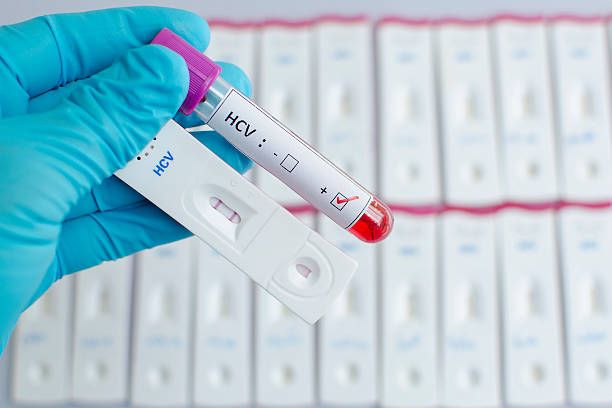The Surveillance and Treatment of Prisoners with Hepatitis C (SToP-C) study demonstrates the impact of direct-acting antiviral (DAA) treatment on reducing HCV transmission in prisons, underscoring the importance of such interventions in elimination strategies. In this non-randomized investigation of 3691 inmates, the effect of expanding DAA treatment alongside the provision of dedicated nursing staff to administer HCV treatment in prison health services was evaluated. HCV testing and treatment within prison settings have proven to be highly cost-effective and should be emphasized as a critical component of national elimination strategies.
Expanding HCV treatment across the statewide prison service is anticipated to be cost-effective, with an average Incremental Cost-Effectiveness Ratio (ICER) of $12,968 per Quality-Adjusted Life Year (QALY) gained. In the base-case analysis, an increase of 275 QALYs is projected over 40 years, with a net incremental cost of A$3.6 million. When the costs of DAA are excluded, the average ICER decreases to $6,054/QALY. With a willingness-to-pay threshold set at $50,000/QALY, all simulations prove to be cost-effective across various discount rates, time frames, and adjustments in treatment levels both inside prisons and in the wider community.
“More than half of the SToP-C participants (n=1926/3691) reported a history of injecting drug use, and 22% (n=797/3691) reported injecting in the past month with the majority (91% of 797) reporting sharing injecting equipment in prison,” according to investigators. “The risk of acquiring HCV in the correctional setting is disproportionately higher than other venues so that mitigation of transmission risk by timeline detection and treatment is critical to reduce the burden of HCV and achieve HCV elimination goals.”1
3 Key Takeaways
- The SToP-C study underscores the significant impact of implementing DAA treatments in prisons, leading to a notable reduction in HCV transmission among inmates.
- Expanding HCV treatment within the prison system is not only medically beneficial but also economically viable, with the study projecting an average ICER of $12,968 per QALY gained.
- The study highlights the disproportionately higher risk of HCV transmission among inmates, particularly those with a history of injecting drug use.
The SToP-C intervention for testing and treating HCV involved improved biannual HCV monitoring for all individuals over 18 years old in four New South Wales, Australia prisons, alongside an expansion of the prison health services' capabilities. Eligible infected participants were provided with a daily dose of sofosbuvir/velpatasvir (400mg/100mg) for 12 weeks, with an option for retreatment in cases of reinfection. To maintain HCV treatment uptake at the levels observed in 2020, the estimated cost would be $369.5 million across 40 years, from 2021 to 2060.
“Strengths of the present study include use of real-world evidence from the SToP-C intervention effectiveness and patient-level quality of life (QoL) data collected from the SToP-C participants in prisons and PWID in the community,” explains investigators. “However, our study also reveals the challenges in patient-reported outcomes from this marginalized population that was predominantly young male prisoners (82% male, median age 33.) The QoL measured by the EQ-5D-5L in the SToP-C incarcerated participants showed relatively high QoL utility scores for those with negative HCV antibody (‘never infected’) (0.931,95% CI 0.924-0.939).”1
In previous reporting by Contagion, The Australian Institute of Health and Welfare, reports that in 2019, 1.5% of the Australian population aged 14 years and older reported injecting a drug in their lifetime. In 2023, 56% of PWID noted that methamphetamine was the most used injected drug. Moreover, they noted that globally in 2020, over 11 million people injected drugs and 1.4 million PWIDs were living with HIV. Given the health risks of PWID, researchers and public health teams have worked to better assess and improve health-related quality of life. In the latest Quality of Life Research journal, researchers published their findings in assessing the health-related quality of life within a cohort of PWID in Australia. 2
All in all, this research underscores the critical need for integrated HCV testing and treatment programs in prisons, not only to combat HCV transmission but also as a vital component of public health strategies aiming for the broader goal of HCV elimination.
References
- Shih S, Stone J, Martin N, Hajarizadeh B, Cunningham E, et. al. Scale-up of direct-acting antiviral treatment in prisons is both cost-effective and key to HCV elimination, Open Forum Infectious Diseases. Published December 18, 2023. Accessed February 5, 2024. https://doi.org/10.1093/ofid/ofad637
- Popescu S PhD, MPH, MA, CIC. Assessing and improving the health-related quality of life among people who inject drugs. ContagionLive. Published February 1, 2024. Accessed February 5, 2024. https://www.contagionlive.com/view/assessing-and-improving-the-health-related-quality-of-life-among-people-who-inject-drugs

